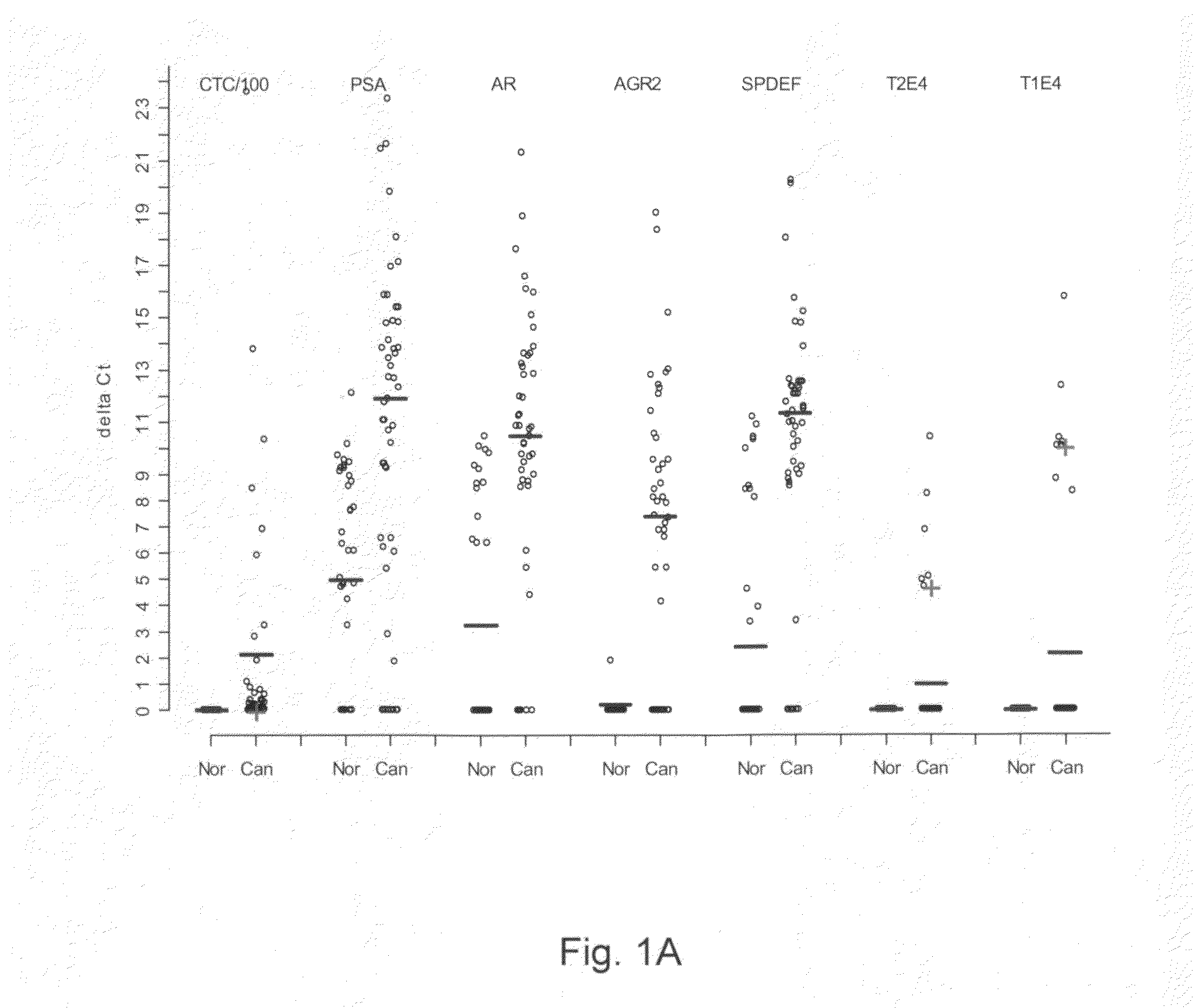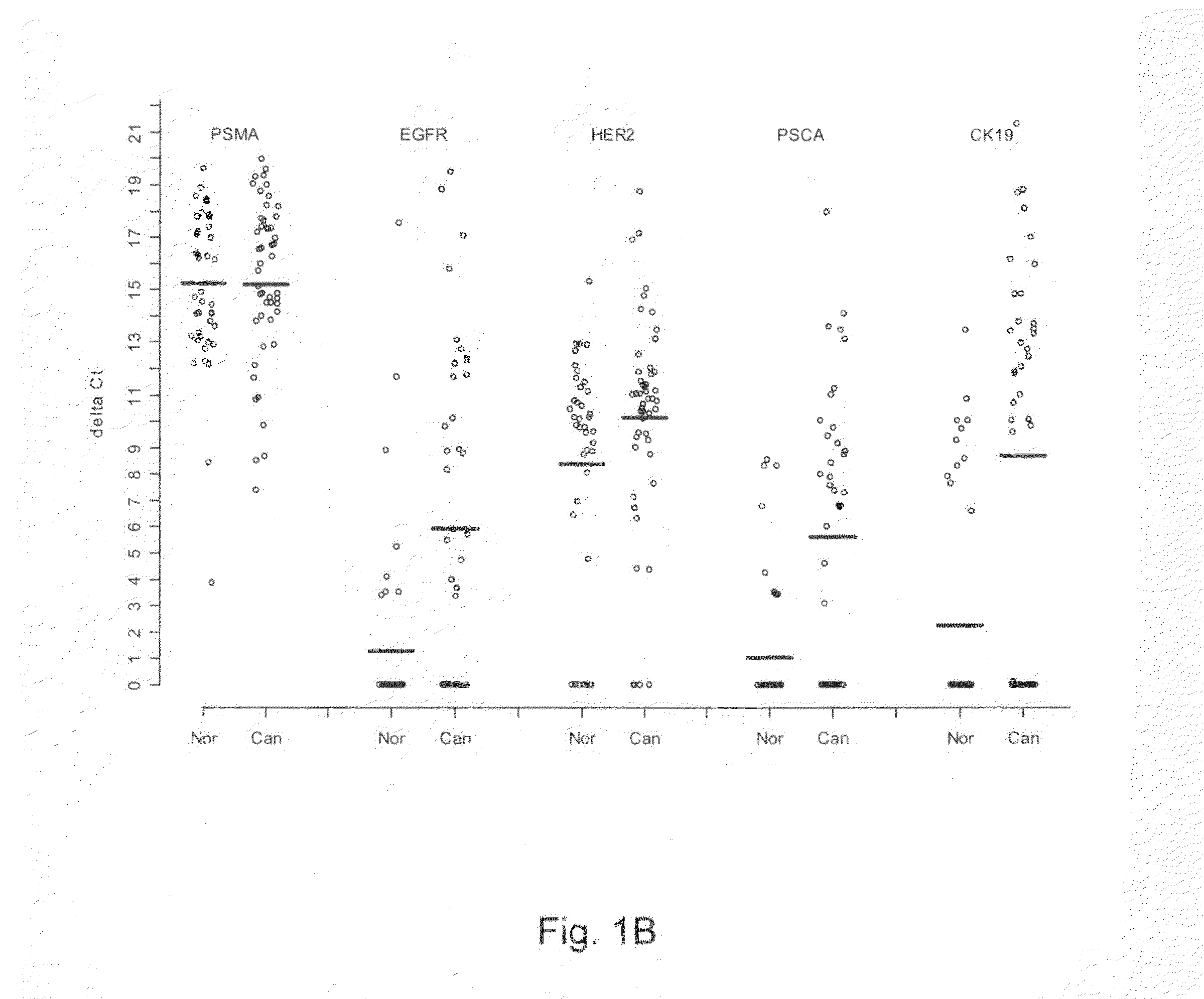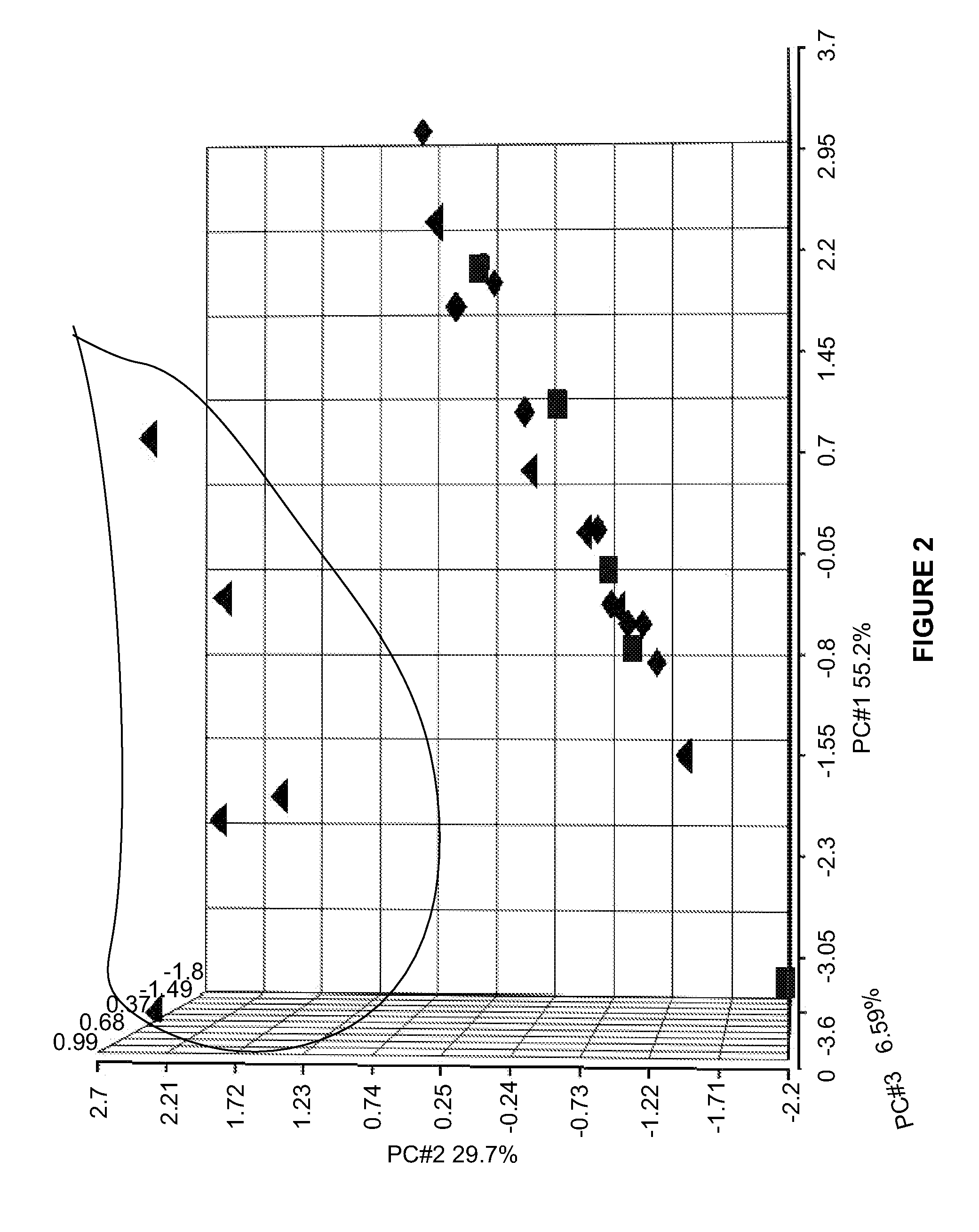Prediction of response to docetaxel therapy based on the presence of TMPRSSG2:ERG fusion in circulating tumor cells
a technology of erg fusion and tumor cells, which is applied in the field of prediction of response to docetaxel therapy based on the presence of tmprssg2 fusion in circulating tumor cells, can solve the problems of metastatic prostate cancer, difficult to track and manage, and use additional markers such as serum proteins and cell types to estimate the progression of prostate cancer and modulate its treatment. , to achieve the effect of improving the quality of life, rapid development of more effective treatments and improving the outcom
- Summary
- Abstract
- Description
- Claims
- Application Information
AI Technical Summary
Benefits of technology
Problems solved by technology
Method used
Image
Examples
example 1
1. Example 1
RTPCR Based Detection of Markers for Stratification with High Specificity
[0067]Thus, disclosed herein is a method of expression profiling of gene of interest in CTCs using real time quantitative RT-PCR. Briefly, in a proof of concept, in total RNA isolated from circulating tumor cells of each of 40 metastatic prostate cancer patients gene expression profiles of 14 candidate genes were investigated by real time quantitative RT-PCR. By this approach it is possible to demonstrate that the TMPRSS2-ERG fusion gene expression is useful for predicting response to Docetaxel treatment in AIPC patients. Based on this application of RT-PCR based detection of the TMPRSS2-ERG fusion gene expression, patients are stratified for effective treatment with docetaxel chemotherapy, with an overall improvement in disease outcome and quality of life with very high specificity. In the sample described herein, all of the patients testing positive for at least one of the two detected TMPRSS2-ERG...
example 2
2. Example 2
Cell Types and Protein Markers Related to Angiogenesis Based Stratification
[0093]This example shows that Tissue Factor (TF), and / or a cell type marker of vascular damage, circulating endothelial cells (CEC) (potentially angiogenesis related markers) or changes in their levels immediately following treatment, are prognostic for OS in patients with castration resistant prostate cancer (CRPC)—which is effectively the same as AIPC—from several markers investigated. In addition, combining these markers with CTC allows construction of a predictive nomogram for treatment outcome. It may be noted that TF and endothelin-1 (ET-1), another marker with a role in angiogenesis, are known angiogenic agents. Described, then, is a method of utilizing CEC, CTC and TF levels alone and in combination to predict OS early on in CRPC patients being treated with docetaxel-based therapy.
[0094]CEC per 4.0 mL, CTC per 7.5 mL of blood, and serum concentrations of ET-1 (pg / mL) and TF (pg / mL) were as...
PUM
 Login to View More
Login to View More Abstract
Description
Claims
Application Information
 Login to View More
Login to View More - R&D
- Intellectual Property
- Life Sciences
- Materials
- Tech Scout
- Unparalleled Data Quality
- Higher Quality Content
- 60% Fewer Hallucinations
Browse by: Latest US Patents, China's latest patents, Technical Efficacy Thesaurus, Application Domain, Technology Topic, Popular Technical Reports.
© 2025 PatSnap. All rights reserved.Legal|Privacy policy|Modern Slavery Act Transparency Statement|Sitemap|About US| Contact US: help@patsnap.com



